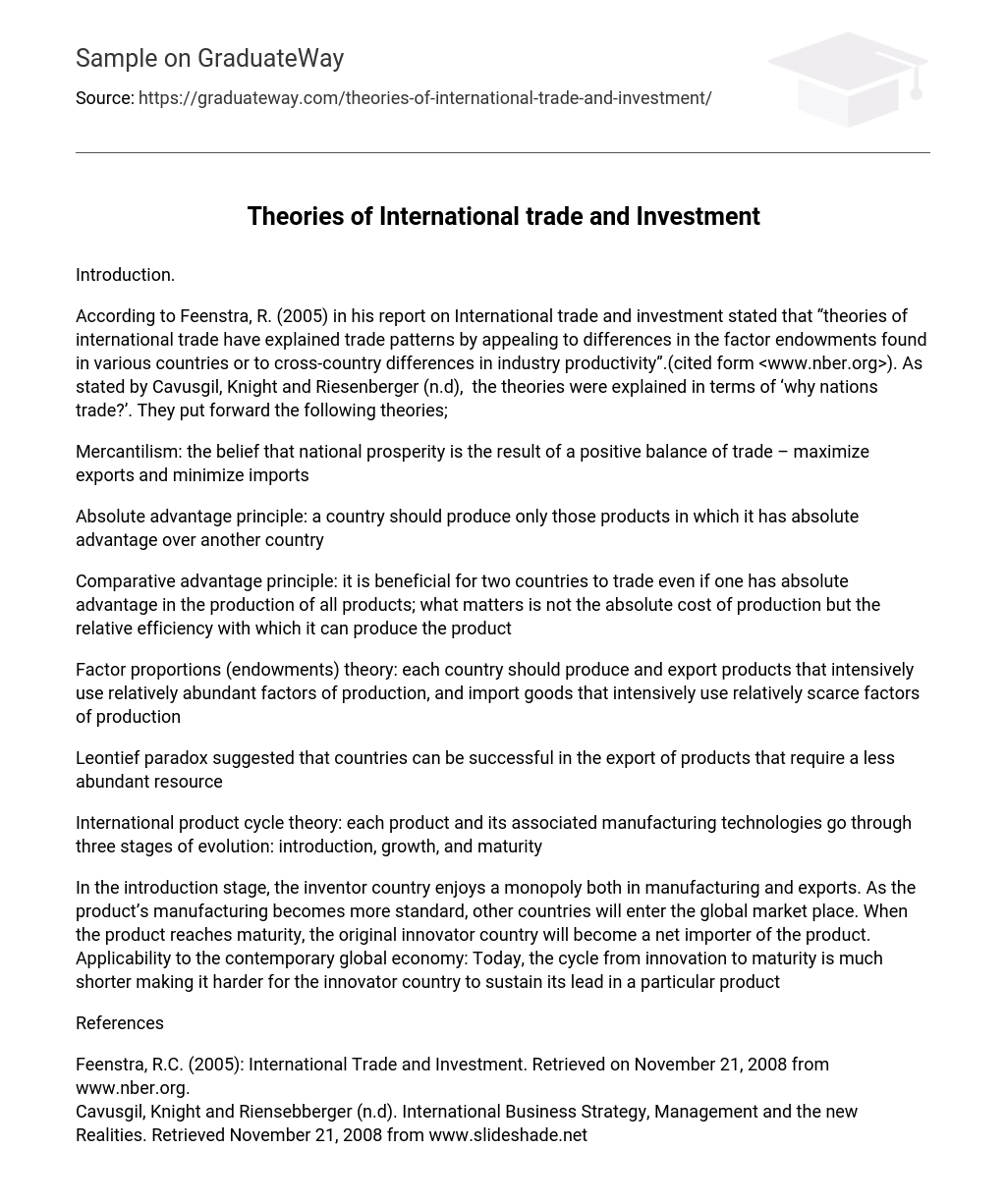Introduction.
According to Feenstra, R. (2005) in his report on International trade and investment stated that “theories of international trade have explained trade patterns by appealing to differences in the factor endowments found in various countries or to cross-country differences in industry productivity”.(cited form <www.nber.org>). As stated by Cavusgil, Knight and Riesenberger (n.d), the theories were explained in terms of ‘why nations trade?’. They put forward the following theories;
Mercantilism: the belief that national prosperity is the result of a positive balance of trade – maximize exports and minimize imports
Absolute advantage principle: a country should produce only those products in which it has absolute advantage over another country
Comparative advantage principle: it is beneficial for two countries to trade even if one has absolute advantage in the production of all products; what matters is not the absolute cost of production but the relative efficiency with which it can produce the product
Factor proportions (endowments) theory: each country should produce and export products that intensively use relatively abundant factors of production, and import goods that intensively use relatively scarce factors of production
Leontief paradox suggested that countries can be successful in the export of products that require a less abundant resource
International product cycle theory: each product and its associated manufacturing technologies go through three stages of evolution: introduction, growth, and maturity
In the introduction stage, the inventor country enjoys a monopoly both in manufacturing and exports. As the product’s manufacturing becomes more standard, other countries will enter the global market place. When the product reaches maturity, the original innovator country will become a net importer of the product. Applicability to the contemporary global economy: Today, the cycle from innovation to maturity is much shorter making it harder for the innovator country to sustain its lead in a particular product
References
Feenstra, R.C. (2005): International Trade and Investment. Retrieved on November 21, 2008 from www.nber.org.
Cavusgil, Knight and Riensebberger (n.d). International Business Strategy, Management and the new Realities. Retrieved November 21, 2008 from www.slideshade.net





